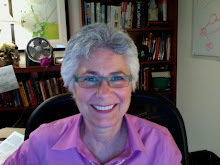Project-based learning (from the Project Approach,
http://www.project-approach.com/foundation/ekwq.htm)
approach to teaching project-based stuff is EKWQ
E is for EXPERIENCE
K is for KNOWLEDGE
W is for WONDER
Q is for QUESTIONS
In the first phase of a project the teacher takes the role of an ethnographer, someone who finds out about the experiences of a group of people and learns by various strategies how that group of people construe those experiences (knowledge).
Throughout the first week or more of a project, the children (learners) reflect on their experiences of the topic, share what they have experienced with the other members of the class. This sharing requires the children to first reflect on and represent their experiences in some way. They can tell stories, write, draw pictures, label drawings, make paintings or collages, make clay models, construct with blocks, role play, etc.
They can also research each other's experience through interviewing each other and doing surveys to find out about each other's experiences. This research of their classmates involves children in rehearsing interview techniques, taking notes, data collection and representation of the groups experience in graphs and charts of various kinds.
The teacher's role is to support the use of a variety of investigative and representational strategies. S/he also has a special responsibility to probe the children to reflect on their experiences and explain them. As children explain their experiences they develop theories about how and why things are the way they remember them. Up to this point in a project tremendous interest can be aroused in the topic because the children are the experts. They know what they have experienced and they reflect on what they know.
Throughout this process they wonder about the different experiences and explanations their classmates offer. The teacher's ethnographer role extends to coordinating the work produced so that the children can all become aware of what has been learned and can appreciate a collective baseline understanding which can be the foundation of the collaborative research process ahead of them in the second phase of the project.
The "wondering" is a by product of the growing interest the children experience in the topic of the project. Out of the wondering comes the desire to question. In these times of immediate electronically available answers to questions, the question itself is becoming increasingly important.
Tuesday, January 22, 2002
Technology assisted assessment tools:
CAPA
Computer-assisted Personalized Approach
http://capa4.lite.msu.edu/homepage/
Mallard
"MallardTM is a World Wide Web based interactive learning environment suitable for virtually any subject. Mallard provides a secure environment, within which one can organize online course material and test students via interactive quizzes with instantaneous problem correction and grading"
http://www.cen.uiuc.edu/Mallard/
"Technology is the key to making tomorrow's classroom -- and today's -- become definitions for 21st-century learning: interactive, collaborative, world-linked, problem-solving, student-centered learning environments. "
from Vision-Seekers in Education:The Makings of a Collaboratory
by Kathy Winograd in Converge Magazine - convergemag.com
http://www.convergemag.com/magazine/story.phtml?id=3030000000004183
Other primary point is that in order to integrate technology into schools, need to change how teachers are taught. At the college and university level where teacher training occurs, students of teaching need to learn with the technology instead of about technology.
Monday, January 21, 2002
Innovations in Online Learning: Moving Beyond no Significant Difference, by Carol A. Twigg
http://www.center.rpi.edu/pewsym/mono4.html
What struck me the most? The notion that higher education allows individual faculty all kinds of freedom and leeway in terms of their course development and delivery -- Academic freedom, dontcha know---, but that we appracoh student learning as a standard process - one size fits all.
this article posits, among other recommendations, that the opposite is desireable: individualize student learning and standardize faculty practices. standardize in terms of more consistency in course development and delivery.
Can't you just hear the collective roar?
Article includes examples of colleges/universities implementing specific innovative approaches to education using technology. the framework was to consider increasing quality, improving access (defined in many different ways), and reducing costs.

